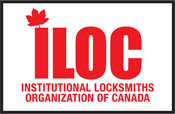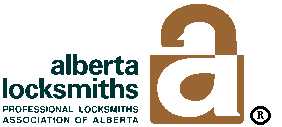![[Security Professionals Area]](ssecpro.gif) Security Professionals Area Security Professionals Area | ![[Associations]](sassoc.gif) Associations Associations | ![[Associations]](logo2.gif) |

The Association of Ontario Locksmiths
2220 Midland Ave., Unit 106
Scarborough
Ontario, M1P 3E6 Canada
Toll free 1-888-272-TAOL (8265)
Phone 416-321-2219

John Seitz - President
Email: Office@TAOL.net
Web Site
British Columbia Association of Professional Locksmiths
6540 Hastings Street, Suite 133
Burnaby, BC V5B 4Z5
Phone 877-55-BCAPL (22275)
Fax 866-96-BCAPL (22275)
Email: admin@bcapl.ca
Website: www.bcapl.ca
President - Ron McLennan
Canadian Security Association
610 Alden Road - Suite 100
Markham, ON L3R 9Z1, Canada
Phone 905 513-0622
Toll-Free in Canada 1-800-538-9919
Fax 905 513-0624
staff@canasa.org
Website: www.canasa.org

Institutional Locksmiths Organization of Canada - ILOC
51 Artreeva Drive
Downsview, Ontario M3H 4T9
President - Thomas Ian Fraser
phone/fax: 416-398-4514
email: office@iloc.ca
website: www.iloc.ca
Master Locksmiths of Quebec, Inc.
C.P. 65076
Place Longueil, Longueil
PQ, J4K 5E6 Canada
Phone 514 463 2759
Fax 514 463 2759

For up to date information on Alberta Locksmith Association - click graphic above.
Box 8504
Halifax, Nova Scotia
B3K 5M2
Ralph McLean - President
Phone 1-902-567-0298
FAX: 1-902-564-5460
![[logo]](./taollogo.gif)